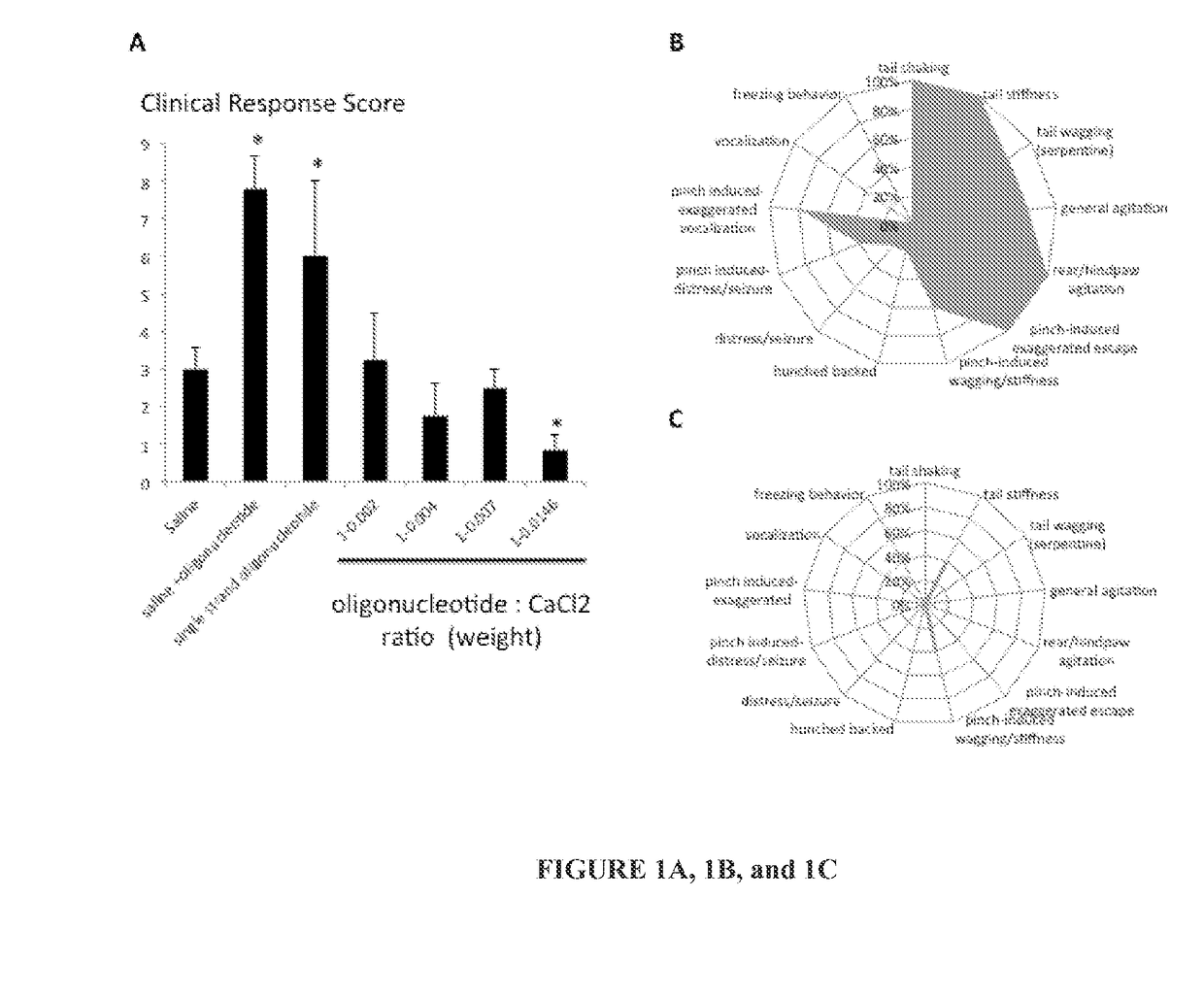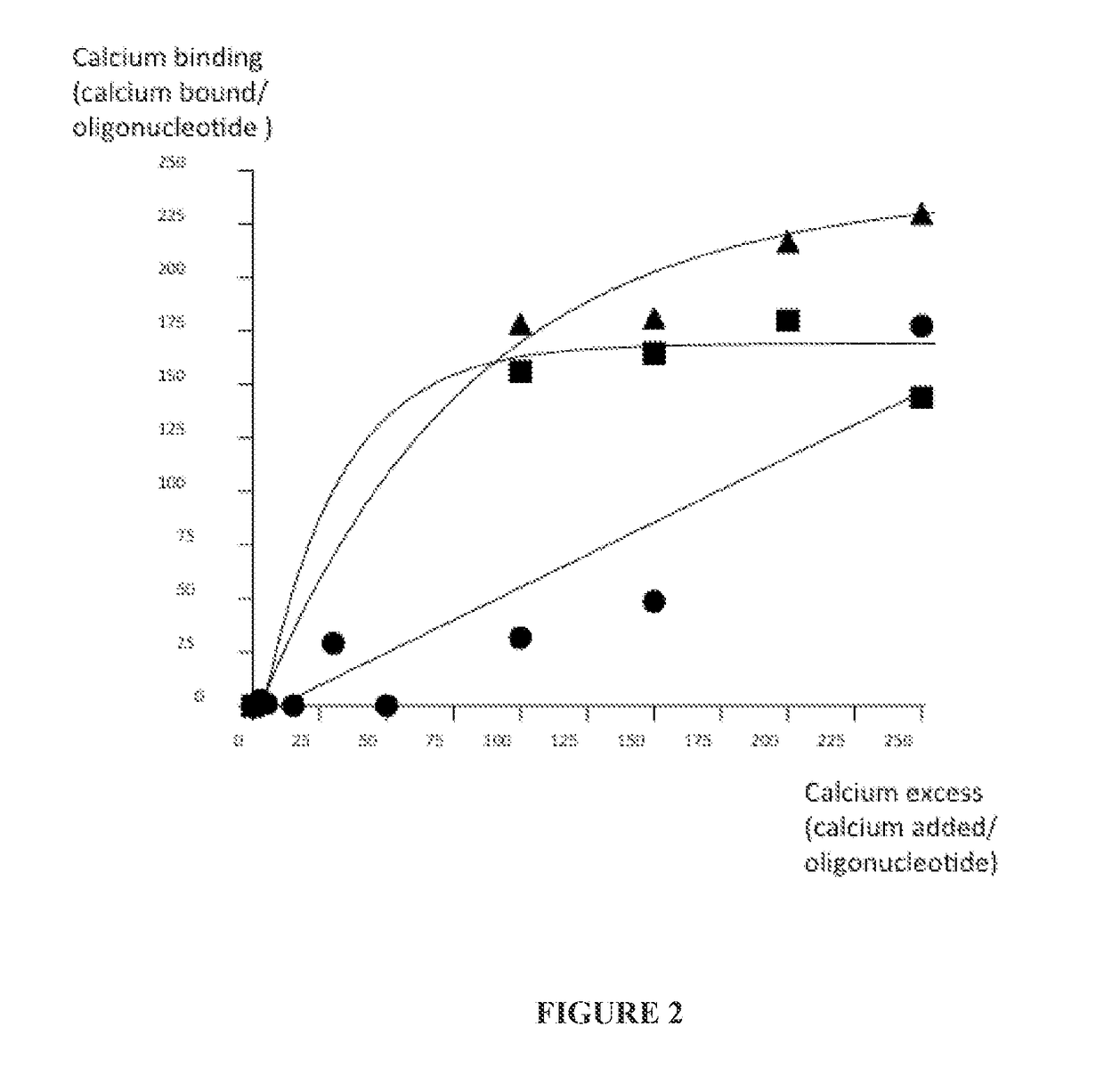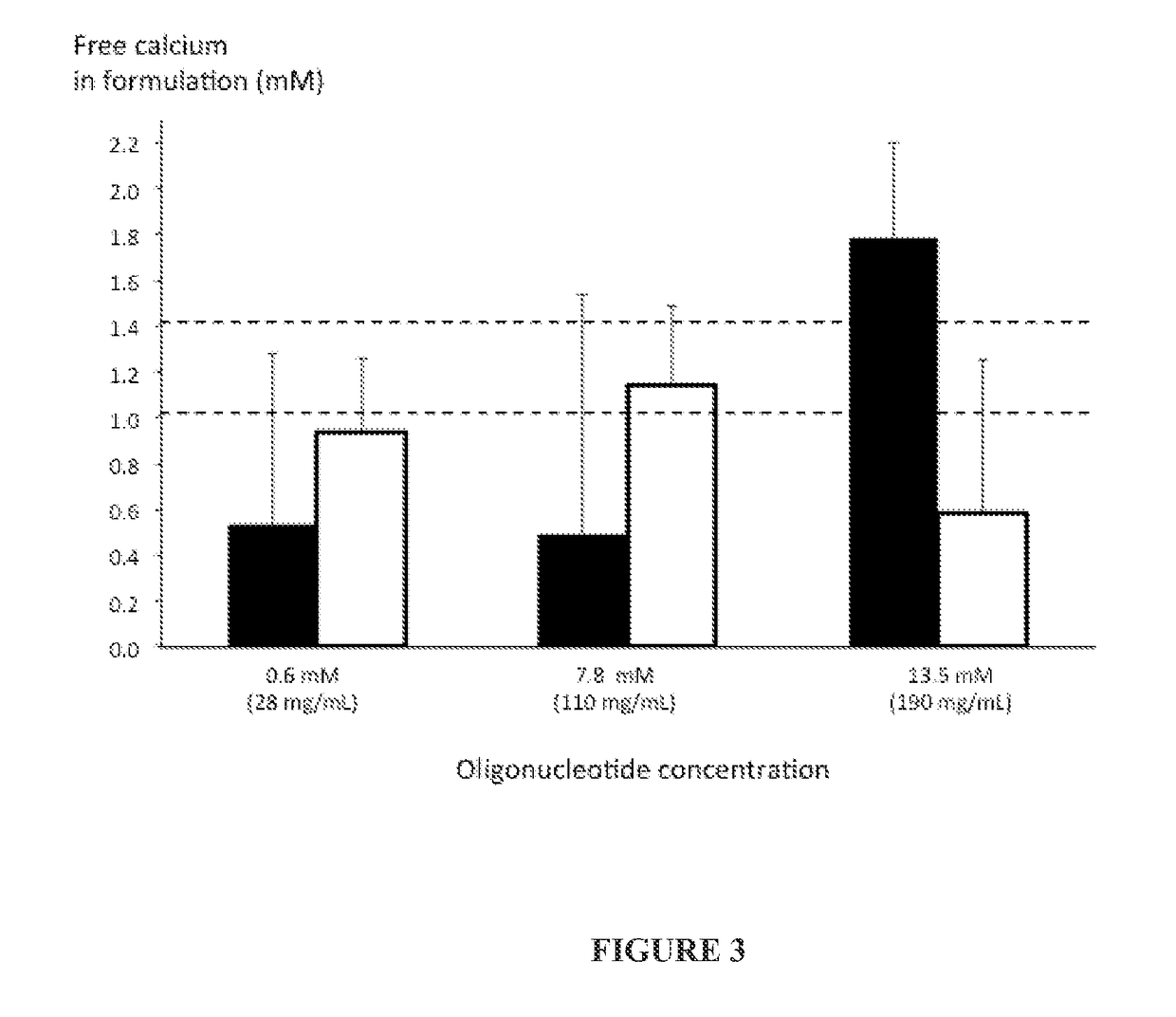Formulations for the delivery of active ingredients
a technology of active ingredients and formulations, applied in the field of in vivo delivery of active ingredient formulations, can solve the problems of unwanted effects upon in vivo administration, and can detract significantly from the therapeutic benefit, and achieve the effect of reducing the adverse effect of an active ingredien
- Summary
- Abstract
- Description
- Claims
- Application Information
AI Technical Summary
Benefits of technology
Problems solved by technology
Method used
Image
Examples
example 1
Clinical Response Score of Oligonucleotide Formulations
[0253]A method was developed to identify the appropriate amount of calcium to add to a formulation in order to prevent clinical signs and adverse events following the intrathecal delivery of an oligonucleotide.
[0254]Briefly, rats were anesthetized using isoflurane, injected intrathecally (percutaneous delivery, L5 / 6, 0.02 mL), placed in a cage to recover and their behavior was recorded for ˜60 min. Using a saline+oligonucleotide formulation (double stranded, 23 base pairs, molecular weight=14092.92 g / mol, % GC=69.5%, sense strand: 5′-GTATGCGTGGGCGGTGGGCGTAG-3′), thirteen spontaneous or evoked clinical signs that can occur following the delivery of an oligonucleotide were identified: tail shaking, tail stiffness, tail wagging, hunched back, vocalization, agitation, freezing behavior, distress / seizure, rear / hindpaw motor dysfunction, exaggerated vocalization following tail pinch, exaggerated escape following tail pinch, induced wa...
example 2
Characterizing an Oligonucleotide:Calcium Binding Relationship
[0256]Experiments were conducted to characterize a oligonucleotide:calcium binding relationship. Particular efforts were dedicated to characterize the amount of calcium remaining free, unbound to the oligonucleotide of Example 1 since the concentration of calcium that is introduced in the formulation, depending on the oligonucleotide concentration, can exceed the endogenous CSF calcium concentration. A broad range of formulations containing 1.4 to 250 fold excess of calcium relative to the oligonucleotide concentration were prepared and free calcium measured (FIG. 2).
[0257]Results showed that the quantity of calcium that binds the oligonucleotide follows a linear relationship (R2=0.89) that increases with the excess of CaCl2. The more calcium is added, the more is bound to the oligonucleotide until a plateau of binding saturation is reached. The binding was also influenced by the overall ionic strength of the tested solut...
example 3
Pharmacological Analysis of an Oligonucleotide Formulation
[0259]Complementary experiments were conducted to ensure that the presence of calcium in the formulation of Example 1 did not alter the pharmacological properties of the oligonucleotide. The tested oligonucleotide is a transcription factor decoy inhibiting the transcription factor EGR1 and prevents the development of pain following injury. Competition ELISA experiments showed that calcium, even at a high excess of concentration, did not impact the affinity of the oligonucleotide for EGR1 (FIG. 4A) nor its stability (FIG. 4B). Behavioral testing of the oligonucleotide in the incisional model and the spared nerve injury preclinical models of pain showed similar efficacy with formulations in presence or absence of calcium (FIG. 5).
PUM
| Property | Measurement | Unit |
|---|---|---|
| ionic strength | aaaaa | aaaaa |
| molar ratios | aaaaa | aaaaa |
| pH | aaaaa | aaaaa |
Abstract
Description
Claims
Application Information
 Login to View More
Login to View More - R&D
- Intellectual Property
- Life Sciences
- Materials
- Tech Scout
- Unparalleled Data Quality
- Higher Quality Content
- 60% Fewer Hallucinations
Browse by: Latest US Patents, China's latest patents, Technical Efficacy Thesaurus, Application Domain, Technology Topic, Popular Technical Reports.
© 2025 PatSnap. All rights reserved.Legal|Privacy policy|Modern Slavery Act Transparency Statement|Sitemap|About US| Contact US: help@patsnap.com



